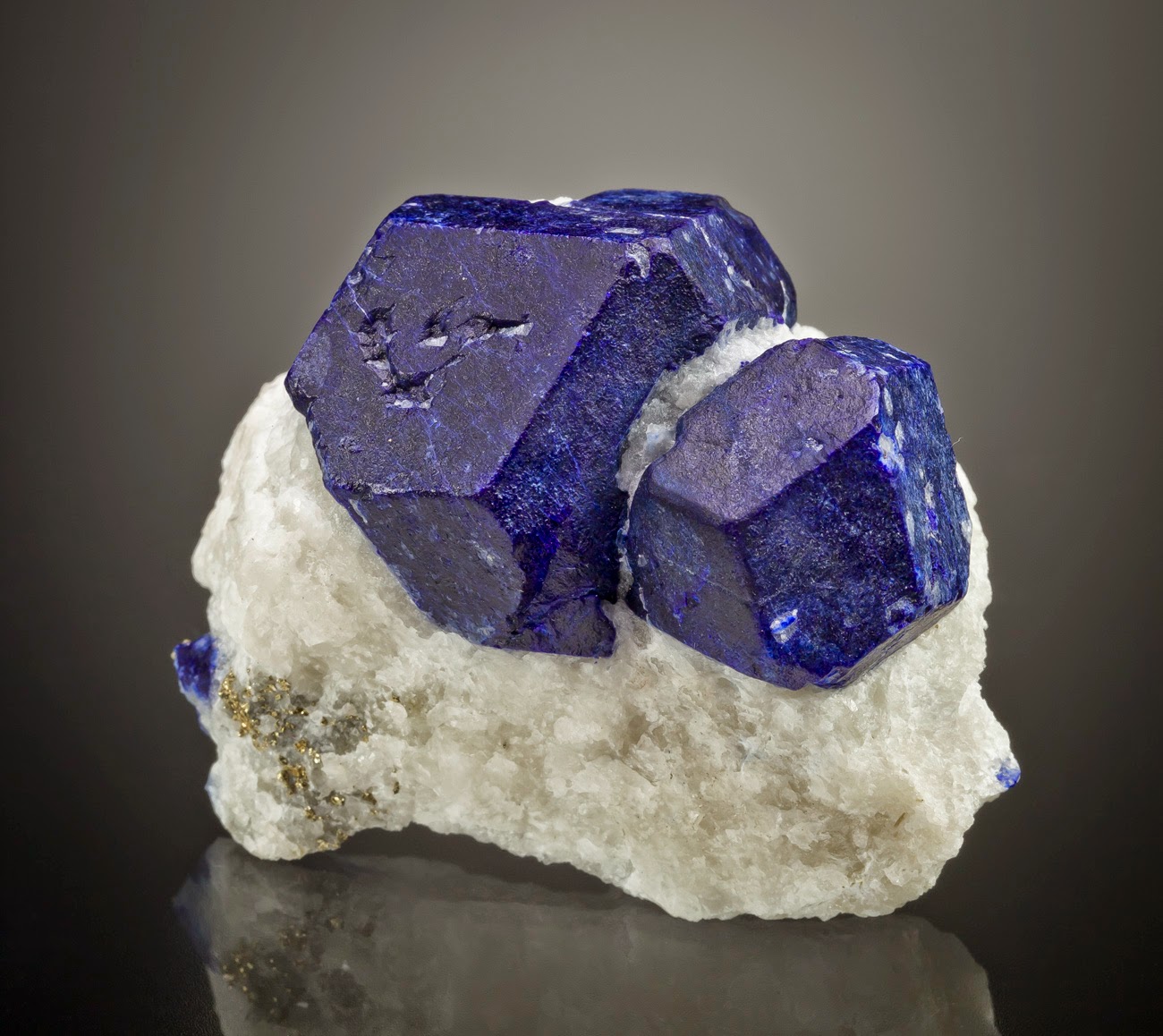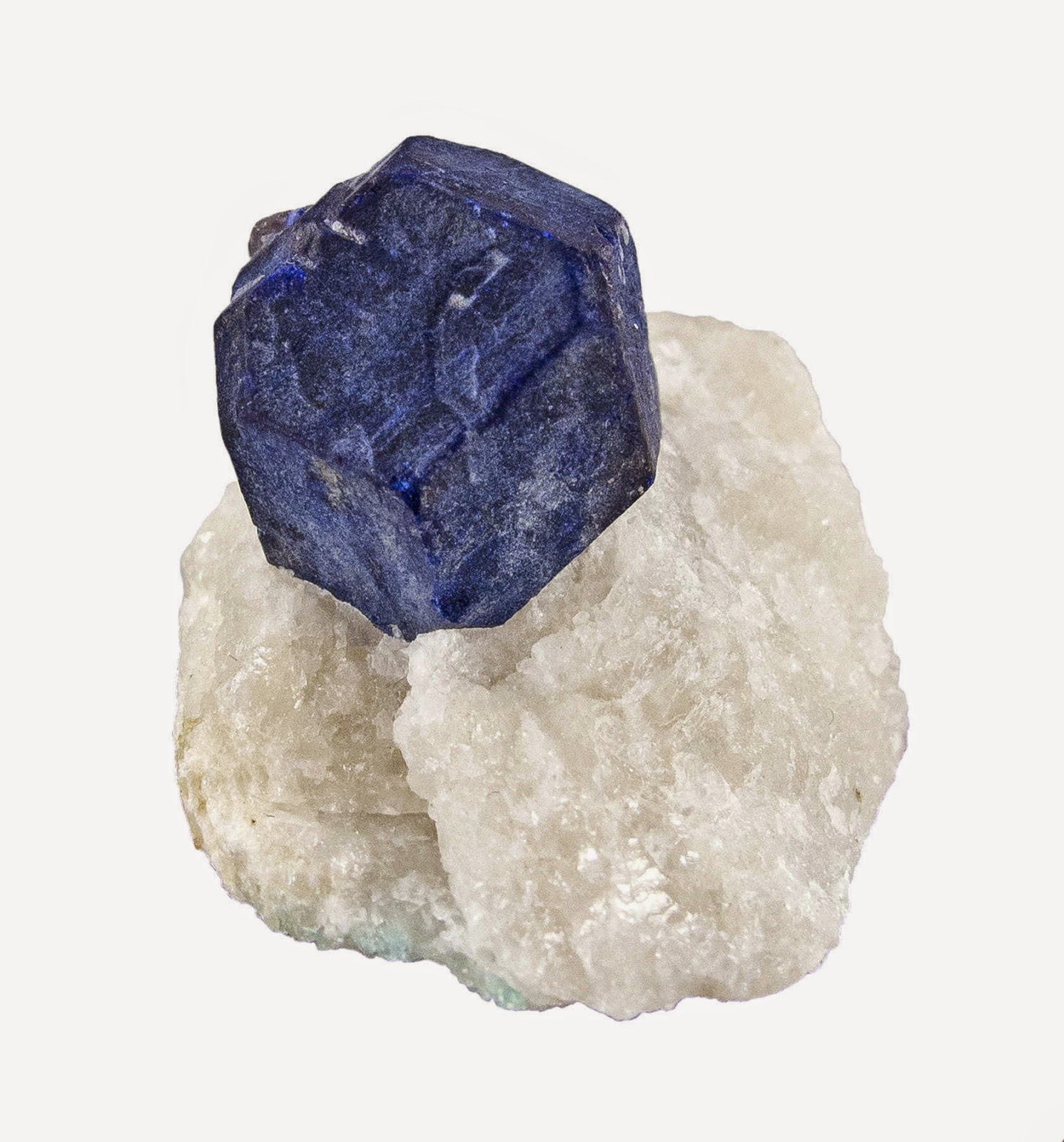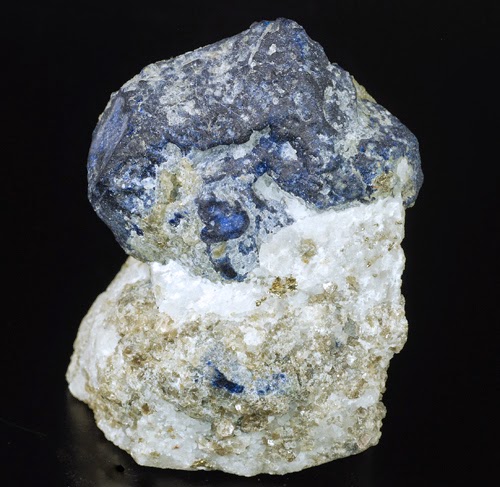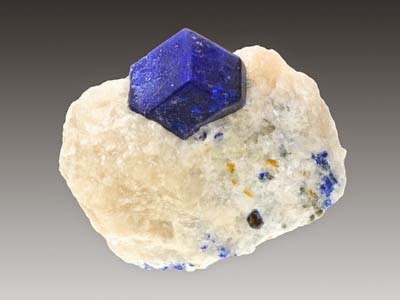
Chemical Formula: (Na,Ca)8[(S,Cl,SO4,OH)2|(Al6Si6O24)]
Locality: District of Badakhshan, Afghanistan.
Name Origin: From the Persian lazward – “blue.”
Lazurite is a tectosilicate mineral with sulfate, sulfur and chloride with formula: (Na,Ca)8[(S,Cl,SO4,OH)2|(Al6Si6O24)]. It is a feldspathoid and a member of the sodalite group. Lazurite crystallizes in the isometric system although well formed crystals are rare. It is usually massive and forms the bulk of the gemstone lapis lazuli.
Lazurite is a deep blue to greenish blue. The colour is due to the presence of S−3 anions. It has a Mohs hardness of 5.0 to 5.5 and a specific gravity of 2.4. It is translucent with a refractive index of 1.50. It is fusible at 3.5 and soluble in HCl. It commonly contains or is associated with grains of pyrite.
Lazurite is a product of contact metamorphism of limestone and typically is associated with calcite, pyrite, diopside, humite, forsterite, hauyne and muscovite.
History
Discovery date : 1890
Town of Origin : BADAKHSTAN PROV.
Country of Origin: AFGHANISTAN
Optical properties
Optical and misc. Properties : Translucent
Refractive Index: from 1,50 to 1,52
Physical Properties
Cleavage: {110} Imperfect
Color: Blue, Azure blue, Violet blue, Greenish blue.
Density: 2.38 – 2.42, Average = 2.4
Diaphaneity: Translucent
Fracture: Conchoidal – Fractures developed in brittle materials characterized by smoothly curving surfaces, (e.g. quartz).
Hardness: 5.5 – Knife Blade
Luminescence: Non-Fluorescent.
Luster: Vitreous – Dull
Streak: light blue
Photos:













